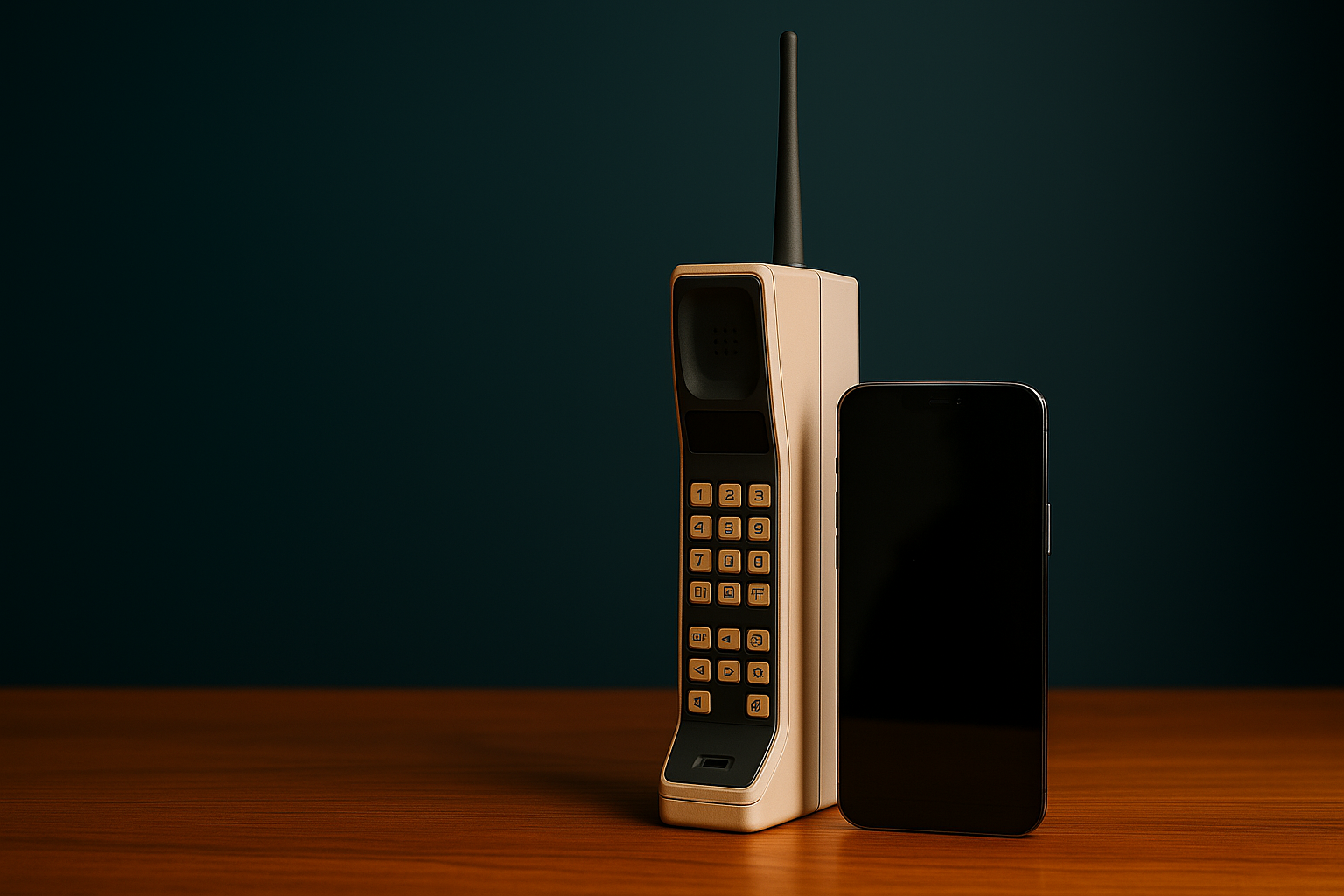First Mobile Phone: The Beginning of the Mobile Era (September 21, 1983)
Forty-two years ago today, the world changed forever. On September 21, 1983, Motorola’s DynaTAC 8000X became the first mobile phone to receive FCC approval. For the first time, people could imagine a phone call without being tied to a wall.
But let’s be real—it wasn’t sleek, cheap, or even practical by today’s standards.
The DynaTAC 8000X: A Status Symbol, Not a Pocket Phone
-
What it was: The first commercial handheld cellular phone available to the public. The world’s first mobile phone.
-
Capabilities: A text-only LED display that let you dial and store numbers. No games, no apps, not even Snake.
-
Price tag: New tech doesn’t come cheap, $3,995 at launch in 1984—more than a used car at the time. This is equivalent to $12,955 in 2025 adjusting for inflation!
-
Limitations: It weighed nearly two pounds, took 10 hours to charge, and gave you 30 minutes of talk time. Forget binge-watching TikTok; you couldn’t even finish a long catch-up call with your mom.
And yet, it was revolutionary. This brick-shaped beast opened the door to the mobile era.
What Led Up to 1983
The DynaTAC wasn’t built overnight. Motorola engineers had been working on cellular technology for over a decade. In fact, Dr. Martin Cooper, a Motorola executive, placed the world’s first mobile phone call in 1973 from a DynaTAC prototype while standing on a New York City street.
That call proved it was possible, but it took ten years of development, lobbying, and testing before the FCC gave the green light in 1983.
Mobile Phones in the 1980s: Power and Prestige
Owning a mobile phone in the 1980s wasn’t about convenience—it was about status. The DynaTAC quickly became a symbol of power. Wall Street bankers and executives were among the few who could afford one, and Hollywood took notice. If you’ve seen Wall Street or American Psycho, you’ve seen the DynaTAC in action.
It wasn’t portable in the way we think of today, but it sent a message: you were important enough to be reached anywhere, anytime.
Why September 21, 1983 Matters
That FCC approval didn’t just green-light a new gadget—it marked the start of a movement. Within a decade, mobile phones would shrink, multiply, and eventually become the essential devices we carry today.
But while we gained convenience, we also picked up a modern curse: spam calls. Something the DynaTAC never had to deal with.
From the First Call to Blocking Spam with AI
The DynaTAC gave us mobility. Smartphones gave us power. But Heynet gives us peace of mind.
Today, spam and scam calls waste billions of minutes every year, clogging up the very innovation the DynaTAC made possible. In fact, Americans received over 50 billion robocalls last year alone.
Heynet is the next chapter in telephone history. Our AI-powered call screening picks up unknown calls, filters out scams, and only lets through the people you actually want to talk to. You get the freedom the DynaTAC promised—without the constant interruptions.
Think of it as the next leap in communication: freeing us from the modern “brick” we all carry—unwanted calls.
Mobile Milestones: From the First Call to AI Call Blocking
This post kicks off our Mobile Milestones series—a journey through the defining moments in mobile history. From the first text message to the birth of the smartphone, and now to the AI-powered tools that protect us from spam calls, each milestone tells the story of how communication has evolved.
And the story isn’t finished. With Heynet, you’re not just reading about history—you’re living the next chapter.








